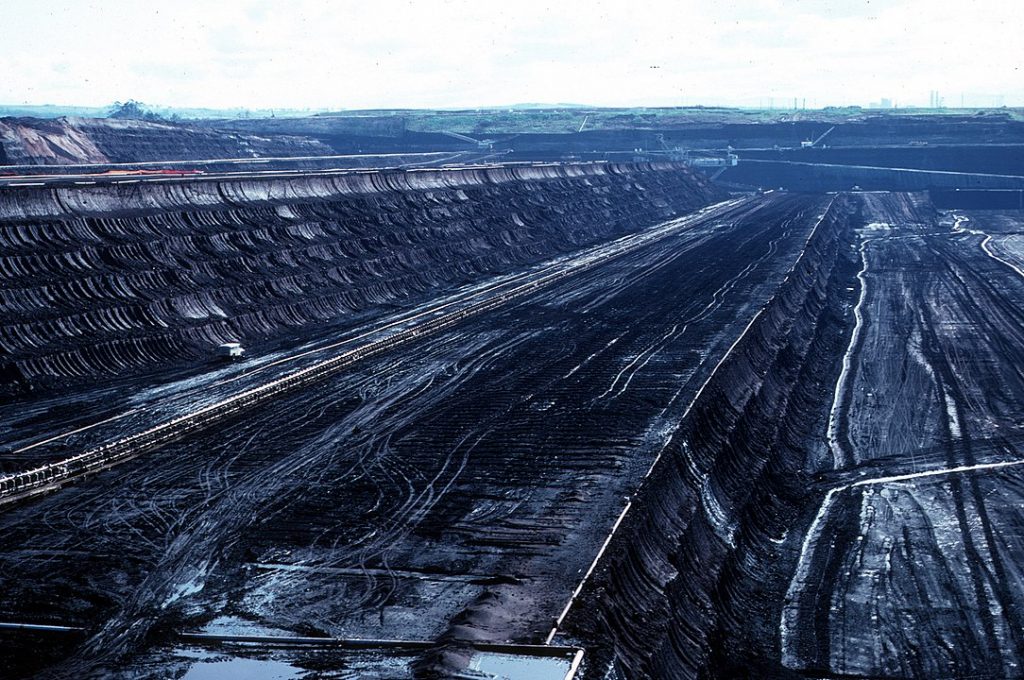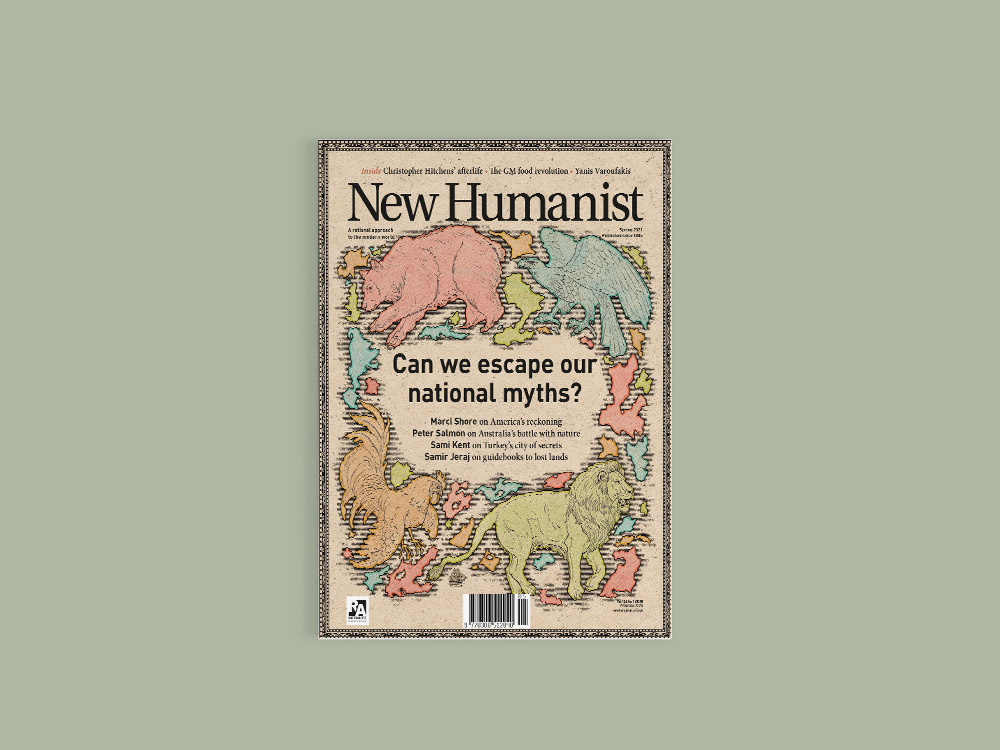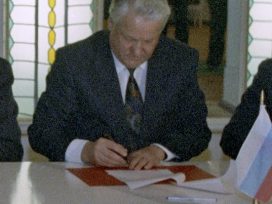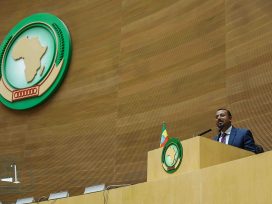Dancing with death
Despite real and immediate environmental catastrophes, Australia’s climate change policies are the most backward in the world. To be pro-environment is to be seen as un-Australian; coal mining in particular is a source of national pride.
When I was growing up in 1980s and 90s Australia, the film Wake in Fright had an almost mythological status. The master negative of this psychological thriller, made in 1971, had gone missing, and it had developed a cult status as Australia’s great lost film.
In 2002, a print of the film was found in Pittsburgh, in a shipping container marked ‘For Destruction’. Restored, it was selected by Martin Scorsese to be shown at Cannes in 2009. He called it ‘a deeply – and I mean deeply – unsettling and disturbing movie’. Wake in Fright was back.
One scene from the film has gained particular notoriety. The hero of the film is John Grant – a schoolteacher who ends up in a fictional outback town after losing all his money gambling. The men have been drinking all day, and now that it’s night they’re going kangaroo shooting. The kangaroo, dazzled by bright light from the car, stands still and allows itself to be shot. But the true test of a man is to get down from the four-wheel drive and fight a giant male. It wants to kick your chest and stop your heart. You only have a knife to fight back with. Grant watches on as the black night is illuminated by the flashing of white light, and as roo after roo is shot, spins on its tail and drops covered in blood. The carnage is relentless and he cannot look away, and neither can we. One of his companions leaps down and takes on a giant, grabbing its tail, pulling it close and cutting its neck to the cheers of his mates.
Grant volunteers to take the next roo. He gets down from the jeep, approaches, knife in hand. The lights flash, he lunges, we see him grabbing the tail. He grapples with the animal, loses his grip, regains it, tries to pull it close, struggles, holds its tail again. ‘He’s trying to dance with it,’ roar the men. Grant stares at the knife in his hand, then drives it into the roo again and again, as the men laugh.
The scene is graphic – it shows a real kangaroo hunt, where kangaroos were actually killed – and it is partly the level of violence which made it so controversial. But this dance, showing man against nature, also speaks to something deeper about Australian national identity.
While Europe has its wild places, the sheer scale of Australia and the way that the untamed territory of the interior impacts upon daily life have no equivalent. Australia is the 55th largest country in the world by population, but only Mongolia, Western Sahara and Suriname have fewer people per square kilometre. Drive more than a few hours inland in most parts of the country, and you are in either bush or desert.
This idea of man dancing with and seeking to dominate nature has informed the western relationship to settlement in Australia from its beginnings to today – starting with the very first arrival of European explorers in 1770 and the subsequent attempts to important western farming methods and subjugate the indigenous population, right through to the immense bushfires which swept through vast swathes of territory in early 2020. Australia’s dance with nature is rapidly becoming a dance with death.

Morwell open cut coal mine, Victoria. Photo by CSIRO, CC BY 3.0, via Wikimedia Commons
In 2020 the Climate Change Performance Index ranked Australia as the worst country in the world in terms of national and international climate change policy. Its carbon emission levels in 2019 were the highest in its history, and its current 5 per cent contribution to global greenhouse emissions is forecast to hit 17 per cent by 2030. In 2019, the United Kingdom generated half its electricity from low carbon energy. In Australia, it is just above one-fifth. The report said Australia is a ‘regressive force’ when it comes to the climate.
These regressive policies continue in the face of immediate and concrete environmental catastrophes. In the summer of 2019–20, enormous bushfires swept across some 46 million acres, with 34 human fatalities and the death of an estimated billion animals. Bushfires are a yearly occurrence, but these were on an entirely different scale. The 900 million metric tonnes of carbon emissions from the 2019–20 fires are equal to the emissions caused by all commercial aircraft flights in an average year.
Dwindling water supplies, combined with rising sea levels and an increasingly overheated climate, are already having devastating impacts on large areas of the country. Temperatures as high as 68C have been measured in Central Australia, while Sydney hit 48.9C in January 2020. And the process is accelerating. Australia has already exceeded the most pessimistic predictions given by the government scientists in 1992 on temperature rise by 2030. The dramatic expansion of coal mining plays a huge part in this – as the world moves towards renewables, Australia’s dependence on fossil fuels continues to grow.
There is a real possibility of environmental refugees from Australia – a country with some of the most draconian refugee policies in the world. Australia may become one of the first countries in the world to become uninhabitable.
What remained baffling to many outside Australia during the fires was the attempt by the current government to downplay and even deny the causal relationship between the fires and climate change. While responses are sluggish throughout the world, there is an increasing consensus that climate change is real, and needs urgent mitigation. Most governments at least pay lip service. Australia’s current leaders, by contrast, have not simply ignored the growing evidence, but actively encouraged the idea that to be pro-environment is to be un-Australian.

This article was originally published in Eurozine’s British partner journal New Humanist. Their 1/2021 issue is dedicated to national myths: read our review here.
In breaking with the increasing international consensus, Australia is drawing on a long history of treating nature and the environment as instrumental, either as something to be overcome – for instance by the imposition of imported, inappropriate farming methods – or something to be exploited, as the current devotion to coal shows. In many ways, the Australian psyche builds itself and sustains itself in opposition to the facts.
It is no stretch to say that looming environmental collapse in Australia is intimately linked with its colonial history. If not all of Australia’s national identity can be explained by these acts of subjugation, the pattern of climate change denial is a recognisable one in a nation in many ways built as a riposte to climate itself.
Even before it was first encountered by Europeans, Australia existed as a part of the western imagination, an ‘overthere’, marking the boundary of knowledge. As far back as 344 BC, Aristotle, arguing that the Earth is spherical, suggested that both water and land would need to be distributed equally around the globe. The second-century mathematician Ptolemy required a southern land to balance the Earth of his geocentric universe. This land, Terra Australis, appeared in the first printed versions of Ptolemy’s works during the Renaissance, as well as on a 1533 globe made by German mathematician Johannes Schöner. He wrote that it is:
an immense region toward Antarcticum, newly discovered but not yet fully surveyed …The inhabitants of this region lead good, honest lives and are not cannibals like other barbarian nations; they have no letters, nor do they have kings, but they venerate their elders and offer them obedience; they give the name Thomas to their children [after St Thomas the Apostle].
While the Thomas theory remained untested, others speculated that this was Plato’s Atlantis, re-risen and filled with all the animals that featured in myths and legends. The report which inspired the British government to sponsor Captain Cook’s expedition conjectured that it was a land of 50 million people, from whence the Incas had left to go to Peru. There were not, however, 50 million Incas awaiting Cook’s arrival on 26 January 1770. According to current estimates, the indigenous population was around 750,000, widely dispersed across the landmass of nearly 8 million square kilometres. The territory Cook set foot on, although he was not to know it, was Wangal land. Its people were custodians of the area around Sydney for at least 20,000 years – although evidence of human settlement in other parts of Australia goes back 60,000.
The Wangal are one of over 500 different nations with widely diverging cultures and languages spread across the continent. In one sense, Ptolemy was right – the disparate cultures and clans of the Northern Hemisphere did have an equivalent in the South. That they were lumped together and designated ‘aborigines’ – the empty term for any ‘person, animal or plant that has been in a country or region from earliest times’ – is the first conceptual violence that would be carried out on them.
Actual violence soon followed. ‘Savages’ were not regarded as human, and therefore had no claim on their own land. While there is little doubt that there were political and military motives for colonisation, during the late 18th and early 19th centuries in Europe the idea of the savage – noble or otherwise – was hugely influential, culturally, philosophically and scientifically. ‘Primitive man’ was used as an antinomy for the civilised: sometimes romanticised, as in Rousseau and Montaigne, but more often given as examples of what remained animal in the human (Kant), and what remained anarchic in political and social systems (Hobbes). That indigenous Australians were denied the vote – and thus citizenship – until 1967 is a monument to the designation of the aborigine as sub-human. Darwinism introduced a hierarchy of the human; in Social Darwinism that hierarchy could be engineered, by extermination or assimilation.
A 2019 Guardian investigation identified 270 massacres of the indigenous population between settlement and the late 1920s. By then assimilation was also in full swing, including the forcible removal of indigenous children from their parents. Instigated in 1869 with the Victorian Aboriginal Protection Act, the policy continued until 1970 in various forms. Aboriginality, it was hoped, could be bred out: lighter skin increased one’s chances of adoption. As the 1937 Conference of Commonwealth and State Aboriginal Authorities put it in its report on Aboriginal Welfare: ‘the policy of the Commonwealth is to do everything possible to convert the half-caste into a white citizen.’
Simultaneously, the indigenous population was being dispossessed of its land. The weirdness of Australia’s initial establishment as a penal colony was replaced by the weirdness of European farming methods being transplanted wholesale onto a land without pastures. The invention of automated looms exponentially increased the need for wool. Soon sheep were being exported to the continent instead of convicts, and between 1846 and 1865 the export of wool from Australia to the UK increased five-fold. Australia became the biggest wool producer in the world.
Early settlers and those who followed replaced native vegetation with shallow-rooted crops. This led to huge tracts of Australia becoming barren salt plains. According to a 2010 government report, 14 million acres of land is almost impossible to reclaim for agricultural use, a number expected to rise to 42 million acres by 2050. The same report notes that in the Western Australian wheat-belt, salinity has halved the numbers of wetland bird species, while 450 plant species are threatened with extinction.
If the gold rush is the headline event of early Australian history, coal has had the greater and more sustained impact. Although not mined until 1850, when it was, it rapidly turned Australia into one of the largest producers and exporters of the fossil fuel in the world.
Currently, Australia exports 29 per cent of the world’s coal, in dollar terms more than double that of its nearest competitor, Indonesia, and four times as much as the United States. Generating 29 per cent of Australia’s carbon emissions, coal has made a major contribution to the country having the largest per capita greenhouse gas emissions in the western world. This is set to increase.
The continued ‘success’ of the mining industry in Australia is not an accident. Rather, it is the result of a media and lobbying campaign spending mind-boggling sums. In the past decade, it’s estimated that the Australian mining lobby has spent AUD$541 million on advertising and political access. Some $22 million alone was spent in 2010 against then prime minister Kevin Rudd’s carbon tax scheme, dwarfing the government expenditure. Over 20 per cent of corporate donations to political parties between 2015 and 2017 were by mining companies. Mining magnate Gina Rinehart, owner of 24 million acres of mining land (the size of Hungary), donated $4.5 million to the Institute of Public Affairs, which regularly publishes books and articles arguing against the reality of climate change.
This spending has been instrumental in convincing a large swathe of the Australian population not only that the mining industry is vital to its economy, but that all environmental issues are, in fact, economic issues – and that the environment and the economy are in opposition. To be against mining, then, is to be against the economy, and to be against jobs. It is to be un-Australian.
As the government expands coal mining, the media has acted as a cheerleader for the industry. Rupert Murdoch’s Newscorp owns between 60 and 70 per cent of the Australian news media. Kevin Rudd has described the relationship between Murdoch and the coal industry as ‘umbilical’.
This reframing of the environment as the enemy of the economy is reflected in public perceptions. A recent report asked Australians what percentage of workers were employed in mining; the average answer given was 16 per cent. In reality, it is 1.9 per cent. People estimated that mining contributes 35 per cent to GDP. The reality is 9.2 per cent. And mining doesn’t even benefit the national economy on the scale that it is portrayed as doing. When asked what percentage of mining is foreign-owned, the answer given was 53 per cent. In reality it is 83 per cent. Despite large protests, in June 2019, the federal government approved the construction of what will be one of the world’s largest coal mines. If the mine – owned by India’s Adani – were a country, by itself it would be the 36th highest emitter of CO2 in the world, one place ahead of Kuwait. The company was awarded numerous tax exemptions and subsidies.
Things show little chance of changing under the current administration. In 2017, the then-treasurer Scott Morrison brandished a lump of coal in parliament, yelling: ‘This is coal. Don’t be afraid. Don’t be scared.’ Those arguing for stricter climate controls have, Morrison argued, an ‘ideological and pathological fear of coal’. Like the drunks urging John Grant to dance with the kangaroo, he was appealing to a version of Australianness which marks opponents as cowards. Morrison is now prime minister.
For how long is this sustainable? As with neurosis in an individual’s psyche, a neurosis in the psyche of a nation can battle on, impervious to the facts. The facts themselves can increase resistance. The temperature in Australia continues to increase. Globally, we are moving from fossil fuels to renewable energy, which means markets will shrink. The dance becomes ever more unsustainable. Will it burn itself out before Australia does? Without a radical change, the answer is no.
Published 15 February 2021
Original in English
First published by New Humanist 1/2021
Contributed by New Humanist © Peter Salmon / New Humanist
PDF/PRINTPublished in
In collaboration with
In focal points
Newsletter
Subscribe to know what’s worth thinking about.
Related Articles

Since the Belavezha Accords were signed in 1991, revanchist politicians and cultural commentators in Russia have lamented the former Soviet Union’s disintegration. Revisiting provocative statements and legislative scheming from the 1990s shows how incremental manoeuvres paved the way for Putin’s colonialist drive disguised as integration.

The end of the Second World War was not a single moment defined by victory and defeat. Rather, it was a pluriform and drawn-out process perpetuated by colonial power politics in the Global South.






